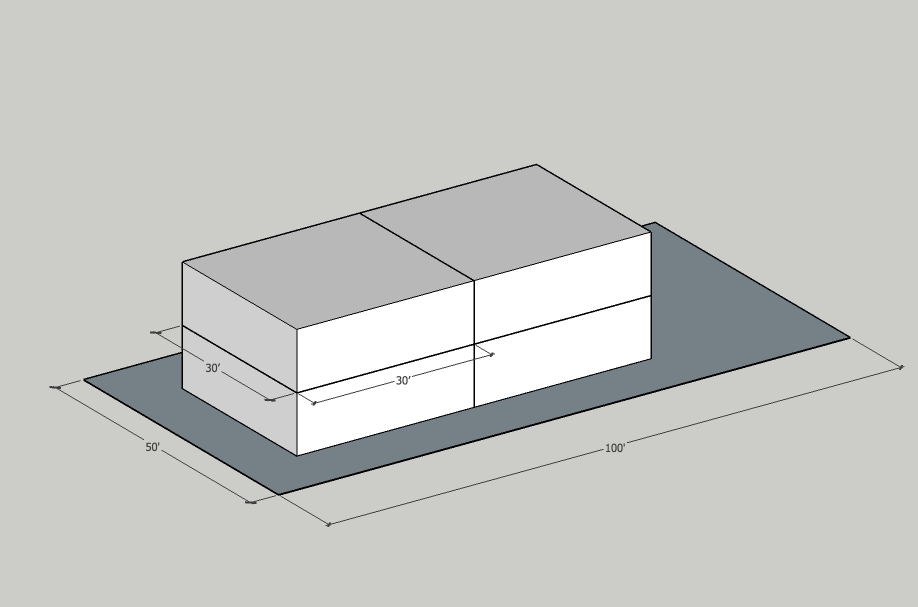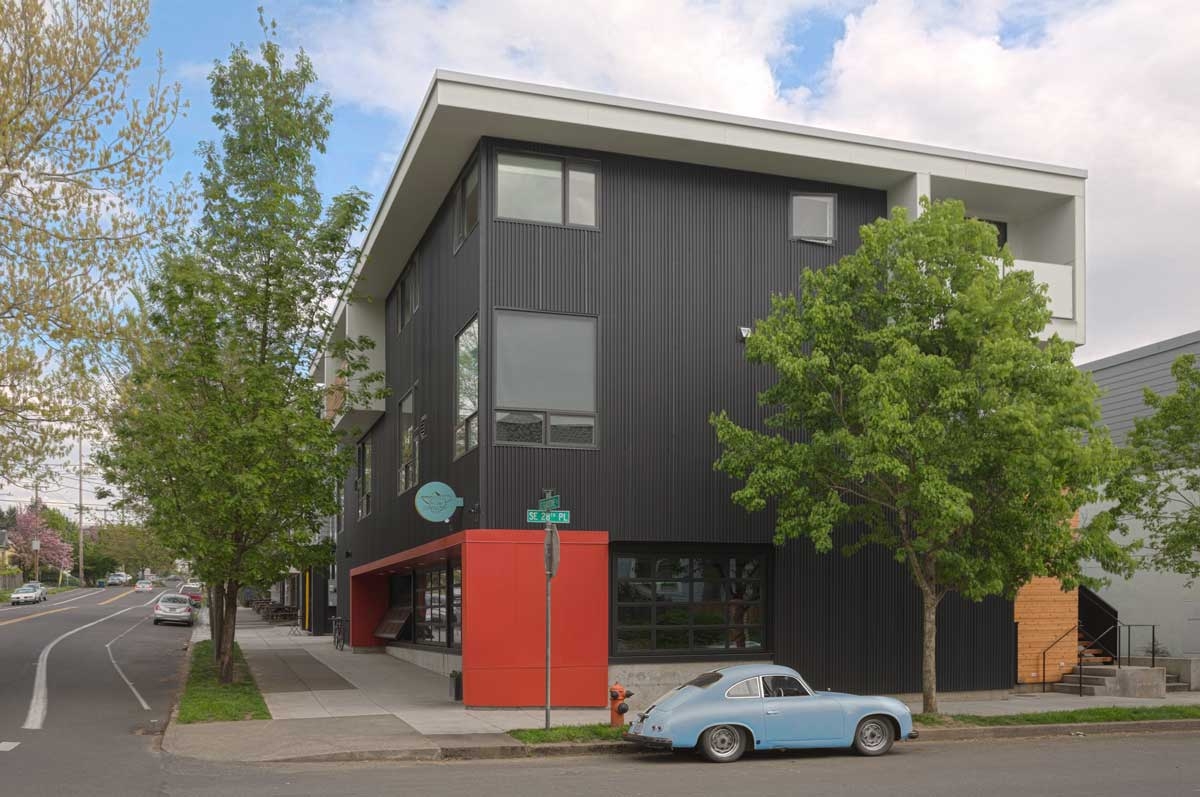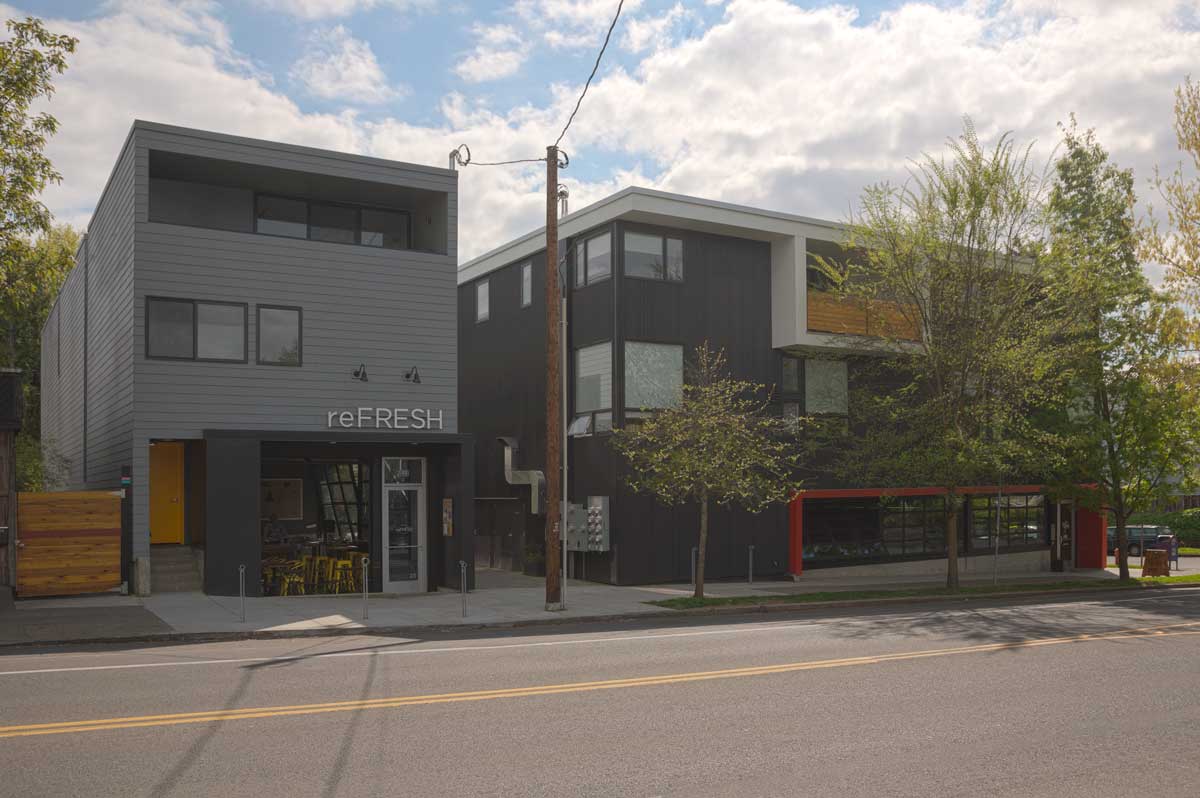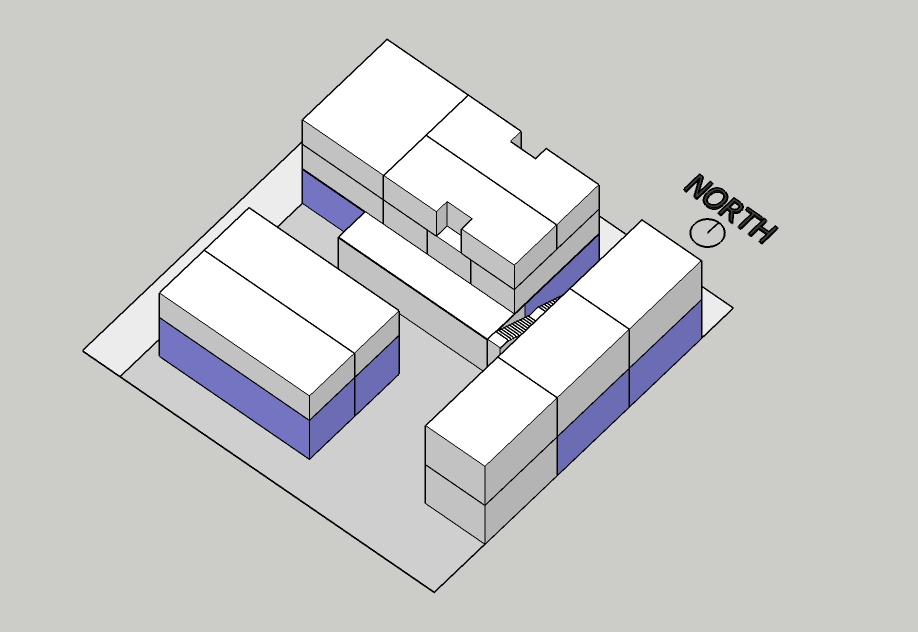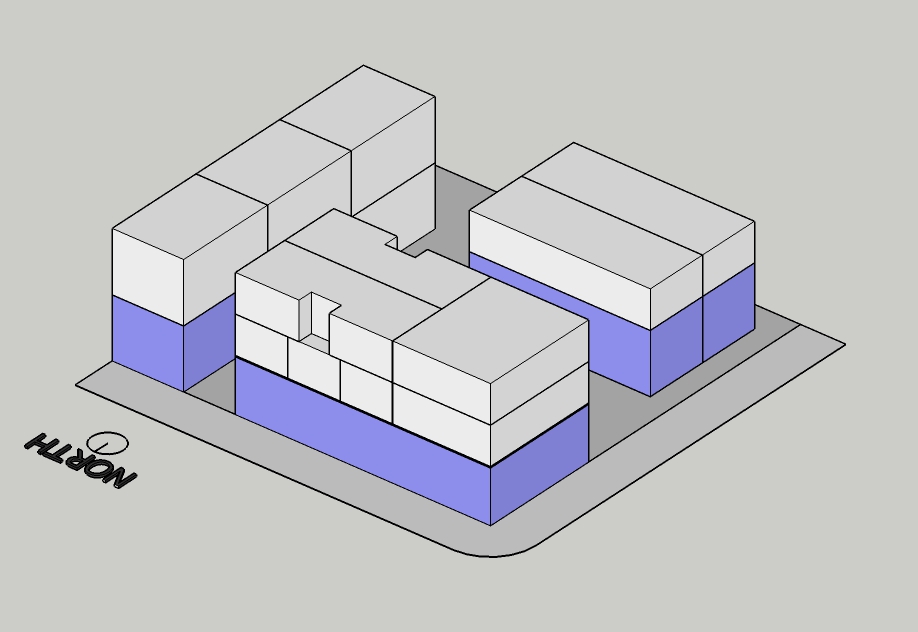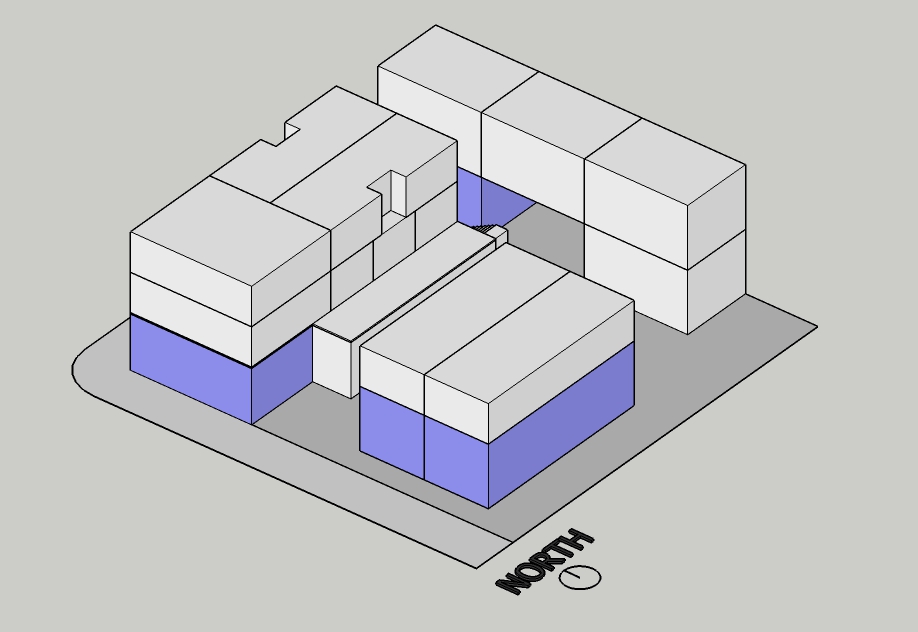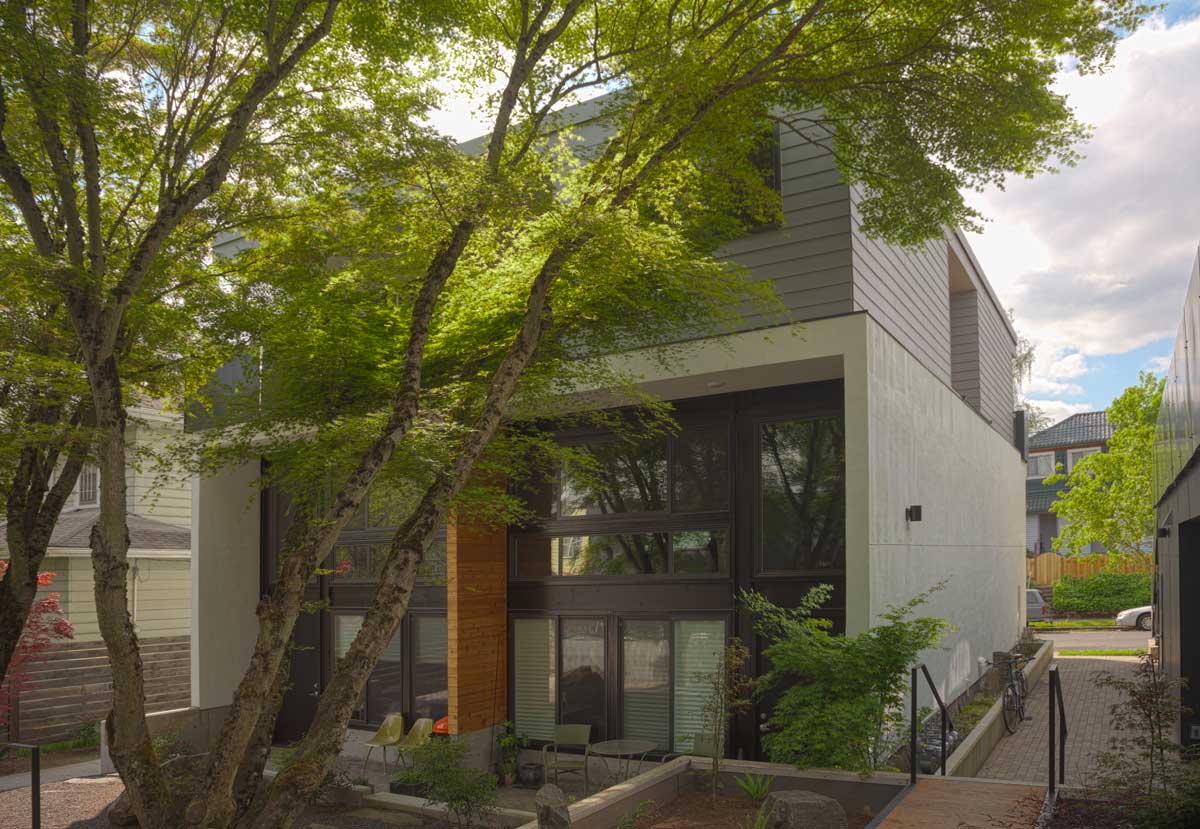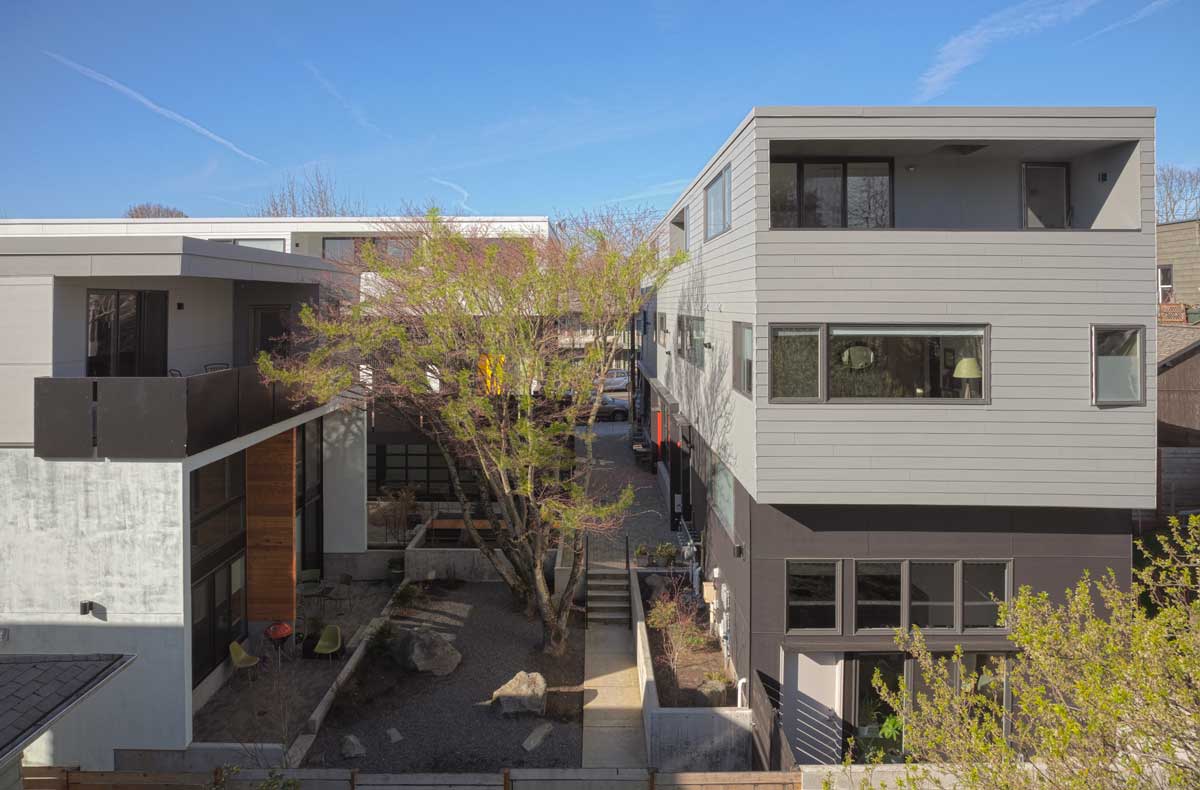Building Data:
Neighborhood: Kenton
Year Built: 1927
Typology: Hybrid Court
Units: 12
Stories: 2
Site Area: 10,000sf
Building Area: 9,296sf
FAR: 0.9:1
Density: 52.3 du/net acre
Zoning: R5 (1du/5000sf of site area)
Is it Legal? NO
2031 N Watts St. is a rare and unusual form of hybrid court, with wings of townhouse units flanking an end bar of four stacked flats. Each unit has its own exterior front door leading to the courtyard. We were quite surprised when we looked this one up on Portland Maps and discovered it was constructed in 1927. The building’s exterior, windows and doors, as well as courtyard paving and landscaping appear to have been installed less than ten years ago. The overall impression of the exterior overhaul makes the building a bit austere, compared to an unaltered 1920s specimen, but it’s still a nicely proportioned, human scaled place.
This building has no off-street parking. With 100’ of street frontage, there is room for 5 cars to park in front on the street.
We’d like to see more new residential projects take this form. The tricky part is making a small rental that is profitable given high land and construction costs. If this were for sale as condo, the project would pencil out, but we haven’t seen may examples of developers willing to risk developing for sale housing without off-street parking.




















